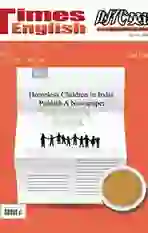跟踪导练(三)(2)
2017-08-11
閱读理解
A
Advice to “sleep on it” could be well founded, scientists say. After a good nights sleep a problem that couldnt be solved the night before can often appear more manageable. Researchers at the University of Luebek in Germany have designed an experiment that shows a good nights sleep can improve insight(顿悟)and problem-solving ability.
“If you have some newly-got memories in your brain, sleep acts on these memories and restructures them, so that after sleep the insight increases,” said Dr Jan Born, a neuroscientist(神经科学家), at the university. To test the discovery, they taught volunteers two simple rules to help them turn a string of numbers into a new order. There was also a third, hidden rule, which could help them increase their speed in solving the problem. The researchers divided the volunteers into two groups: half were allowed to sleep after the training while the rest were forced to stay awake. Dr Jan Born and his team noticed that the group that had slept after the training were twice as likely to figure out the third rule as the other group. “Sleep helped,” Born said in a telephone interview. “The important thing is that you have to have a memory description of the problem you want to solve in your brain and then you sleep, so it can act on the problem.”
But Born admitted that he and his team dont know how restructuring of memories occurs or what controls it. Pierre Maquet and Perrine Ruby of the University of Liege in Belgium said the experimental evidence supports the suggestion that sleep can help develop creative thinking. Although the role of sleep in human creativity will still be a mystery, the research gives people good reasons to fully respect their periods of sleep, they added.
1. What is the purpose of the experiment?
A. To test problem-solving ability in sleep.
B. To discover peoples insight during sleep.
C. To prove a good sleep helps solve problems.
D. To discuss how to improve sleeping quality.
2. How did Jan Born and his team carry out the experiment?
A. Through comparison. B. Through interviews.
C. Through talks. D. Through imagination.
3. What does Paragraph 2 mainly tell us?
A. Sleep can help solve problems.
B. People should sleep as long as they want.
C. Different people have various periods of sleep.
D. Scientists know how sleep restructures memories.
4. Which of the followings is TRUE about the experimental evidence?
A. It helps scientists control memories.
B. It explains the role of sleep in human.
C. It tells us the role of sleep is a mystery.
D. It shows sleep does good to creative thinking.
B
More teachers are starting off the school year with letters to parents and students to introduce themselves and set a tone (基調)for the year. “The letter is a good way to start active communication with parents,” several teachers told Education World.
“I think its my job,” said Dorothy Peselli, an English teacher at Sparta High School in Sparta, New Jersey. Peselli, who gave out the letters on the first day of school, told Education World, “It gives parents a good image of you as a teacher. If you start communication off in an active manner, you will have the parents on your side when you need them.”
In her letter to parents, Peselli encourages them to call or send e-mails to her with special concerns about their children. “I want to work as a team to make sure that your children become independent lifelong learners,” Peselli wrote to parents last September. She also telephoned the parents of all her students at the beginning of the year.
Peselli includes in the letter a classroom handbook listing plans and rules. And she asks both parents and students to read and sign statements (included in the letter) that they read the handbook. The student letter also lists needed supplies and gives encouragement. “Please come to class ready to work and learn. This will be an exciting year for all of us,” says it.
Last year, Peselli taught at a different high school and parents there were “shocked”, but thankful, that she had so much contact with them. “I received roses and a thank-you note from one boy and his mother,” said Peselli. She wished her own childrens teachers would take the time to write notes as well. “I never got a letter home from any of my daughters high school teachers,” she said. “It would be nice to know the background of some of the people who are teaching my daughter.”
5. We can learn from the text that Pesellis letter ___ .
A. is used to give encouragement
B. mainly introduces her teaching experiences
C. would shock the parents from another school
D. can help teachers communicate with parents more
6. The underlined word “it” in Paragraph 4 refers to “___”.
A. the handbook B. the requirement
C. the school D. the student letter
7. What can we infer from the last paragraph about Peselli?
A. She seems to be popular among boy students.
B. She means to surprise parents by writing letters.
C. Parents were satisfied with her way of working.
D. All her children are studying at the high school.
8. The purpose of the text is to ___ .
A. give advice on how to teach students
B. introduce an English teaching method
C. encourage teachers to keep in touch with parents
D. show us how Dorothy Peselli makes teaching plans
